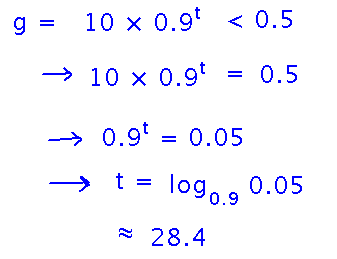Misc
Please fill out Maddy’s survey re SI times
Questions?
Syllabus Discussion
See syllabus handout or online copy
Grading
Problem sets, e.g., this one from last semester, will start with a list of abilities I expect you to demonstrate by the time you finish the problem set.
Suppose a hypothetical student displays exactly those abilities, no more and no less. What grade would they get? Why?
8/10, because they met expectations but didn’t exceed them.
Some examples of common ways to exceed expectations include...
- Noticing extensions of, applications of, or connections between problems that haven’t been explicitly mentioned in the course (and note that if you have encountered real-world forms of a problem you can get “real-world math bounty” extra credit for them).
- Exploring multiple ways of presenting or solving a problem, e.g., algebraic and graphical.
- Doing unrequested research into alternative solutions, problem history, etc.
- Particularly elegant solutions, i.e., clear or efficient ways to solve a problem that wouldn’t be obvious from where the problem appears in the course.
- Anything else that gets you thinking about the problem but that wasn’t asked for in posing it — this is deliberately open-ended.
Suppose you end the semester with a grade average of 70%. What letter grade would you expect to get for the course?
70% would probably be a B. I shift the numeric-to-letter mapping down to account for the fact that I give lower numeric grades than usual.
Office Hours
Which of the following are times you could see me? Why or why not?
Office hours are Monday through Friday, 8:00 to 5:00, so...
- Thursday, 3:00 PM (yes)
- Saturday, 6:30 AM (no)
- Monday, 8:00 AM (yes)
- Wednesday, 5:00 PM (no)
Books, Etc.
Where do you get the textbook?
Online, either PDF via Canvas or web-based
What, if anything, do you need beside the textbook? Where do you get it?
Mathematica, from Geneseo.
Late Policy
(And pop pre-calc review)
How late does a 10-point problem set have to be in order to get a grade of 0 (i.e., in order for its grade to round to 0)?
The compound late penalty means that an assignment that would have gotten 10 points if turned in on time, but that is t days late, gets a grade of 10 × 0.9t.

Since I round grades to the nearest whole number, the grade becomes 0 if it is less than 0.5. So…

Time and Place
Where do we meet Thursday?
Sturges 104
Next
A preview of calculus.
Look at section 2.1